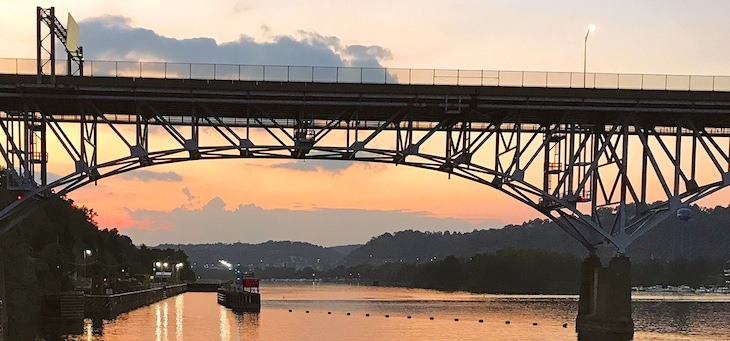UA-led MarTREC working to improve multimodal logistics
by August 6, 2018 12:55 pm 330 views

The Maritime Transportation Research and Educational Center, led by the University of Arkansas, is researching ways to improve multimodal transportation, which integrates trucking, rail and barge carriers. The center recently received the third of the grants from the U.S. Department of Transportation. (photo courtesy Heather Nachtmann)
The Maritime Transportation Research and Education Center (MarTREC) recently received the third of five $1.4 million grants, allowing the center to focus on preserving the U.S. transportation system “through efficient, resilient and sustainable maritime and multimodal logistics and infrastructure,” said Heather Nachtmann, MarTREC director.
Multimodal logistics refers to the integration of trucking, rail and barge carriers. The U.S. Department of Transportation (DOT) provides the grant money to MarTREC, a consortium of the University of Arkansas (lead institution), Jackson State University, Louisiana State University, Texas A&M University/Texas Transportation Institute, University of New Orleans and Vanderbilt University. Nationwide, MarTREC is one of 20 centers designated as a Tier 1 University Transportation Center, which refers to the level of grant money received from the DOT.
All of MarTREC’s research is completed by teams that comprise of faculty and graduate and undergraduate students, said Nachtmann, who wrote the proposal that led to the creation of the center in 2013. The center is being funded by its second DOT grant, which started in 2016 and will end in 2022.
The center focuses its research on maritime and multimodal logistics management, maritime and multimodal infrastructure preservation and disaster response and transportation planning for coastal and river valley communities.
The center also offers outreach and educational programs. In July, it hosted the five-day GirlTREC camp for fifth- and sixth-grade girls. “Developing the future workforce is a critical mission of MarTREC and the [University Transportation Center] program,” Nachtmann said.
The center recently requested proposals for new projects and received 21 problem statements. They were reviewed by the center’s 14-member Professional Advisory Board, which includes federal and state transportation officials and executives of trucking companies and organizations, including trade group Arkansas Trucking Association, less-than-truckload carrier ABF Freight and carrier J.B. Hunt Transport Services. After the review, nine were asked to submit full proposals. The new projects will be selected in August.
When asked about how the tight truckload capacity is impacting waterborne freight demand, Nachtmann said the limited truckload capacity has generated more interest in other modes of transportation, including the inland waterways.
“When large amounts of freight [especially commodities] need to travel where waterway navigation exists, inland waterway transportation becomes increasingly competitive,” she said. “The waterways are existing transportation infrastructure that have excess capacity and do not increase road congestion. This modal shift is something that our center seeks to motivate through additional knowledge about maritime transportation opportunities and decision support tools.”
Some of the MarTREC projects that Nachtmann is most proud of include the regional impact study of the McClellan-Kerr Arkansas River Navigation System; corrosion-tolerant, pre-stressed polymer plate retrofits for improved waterway lock reliability; and national inventory and analysis of transit-related development near coasts and ports.
Along with her position as director of MarTREC, Nachtmann is associate dean for research in the UA College of Engineering, the Earl J. and Lillian P. Dyess Endowed Chair in Engineering and professor of industrial engineering. She started at the UA as assistant professor of industrial engineering in August 2000. The College of Engineering has led a transportation center since the early 1990s, and the umbrella center is the Mack-Blackwell Transportation Center.
